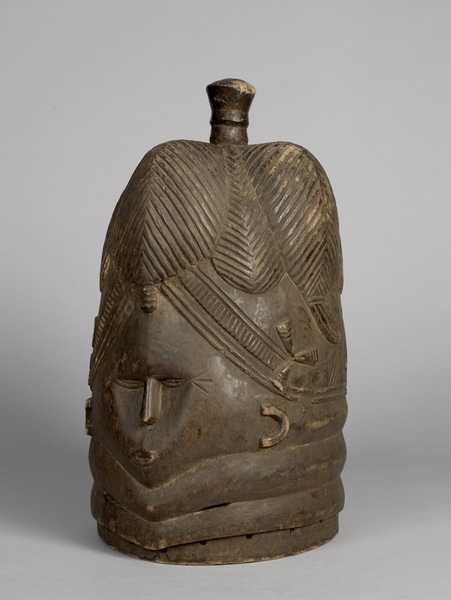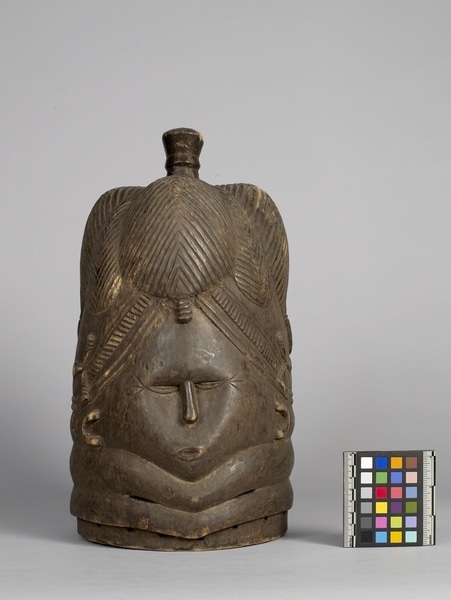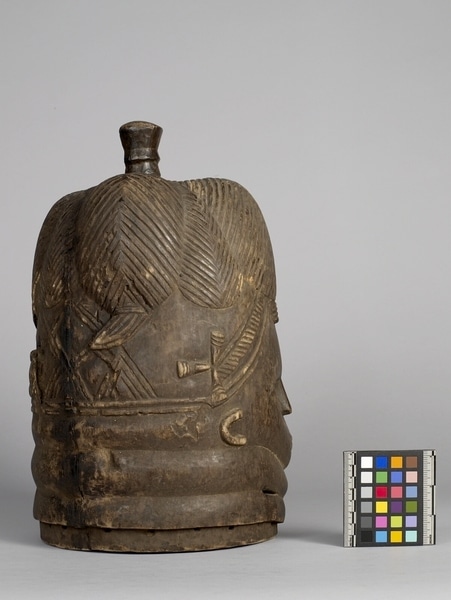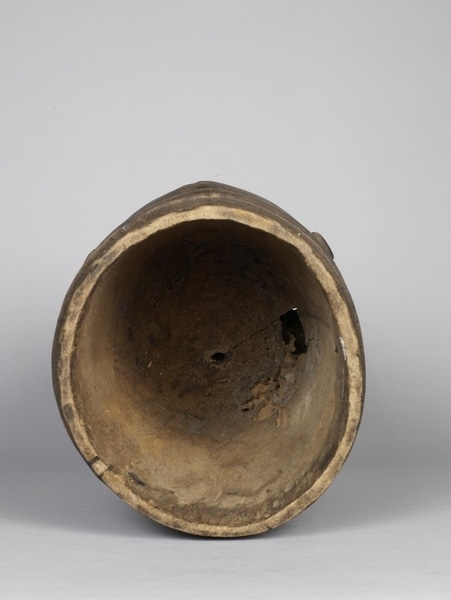Helmet Mask Item Number: K2.424 from the MOA: University of British Columbia




Description
Hollow, brown wood piece of a woman's head with an elaborate coiffure. The thin crescent-shaped eyes each have three grooved lines radiating from the outer side. Has a long, thick nose and a small, compressed mouth. The ears are crescent-shaped. Around the sides of the head, the coiffure has lattice-work features with a bow-tie-like feature at the back. Above, four major rounded features with grooved diagonal lines and a ridge along the middle are evenly spaced all around with another similar feature in between. There is a knob at the top of the head. Around the lower portion of the head, there are four rounded, horizontal bands, the lower three of which go all the way around while the upper one of which terminates at the ears. A horizontal series of holes is around the lower band.
History Of Use
The sowei, or bundu, mask is made by men but worn as a dance mask by women in the Sande women's society, during girls' initiation camps. There they are prepared for marriage, trained in both domestic and economic pursuits and in singing and dancing. The masked dancers visit the camps to remind the girls of the ideals of female beauty and virtue. When the girls leave, they are considered to be women ready for marriage. During a dance, the mask is worn by a "ndoli jowei" performer, with a full costume concealing the dancer's identity.
Item History
- Made in Sierra Leone
- Owned by Walter C. Koerner before 1972
- Received from Walter C. Koerner (Donor) during 1972
What
Who
- Culture
- Mende
- Previous Owner
- Walter C. Koerner
- Received from
- Walter C. Koerner (Donor)
Where
- Holding Institution
- MOA: University of British Columbia
- Made in
- Sierra Leone
When
- Ownership Date
- before 1972
- Acquisition Date
- during 1972
Other
- Condition
- poor
- Current Location
- Case 98
- Accession Number
- 0160/0087